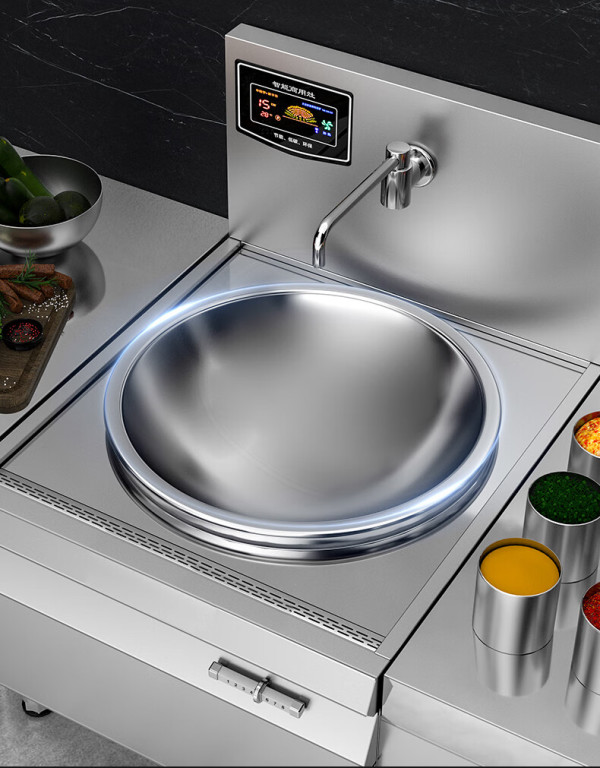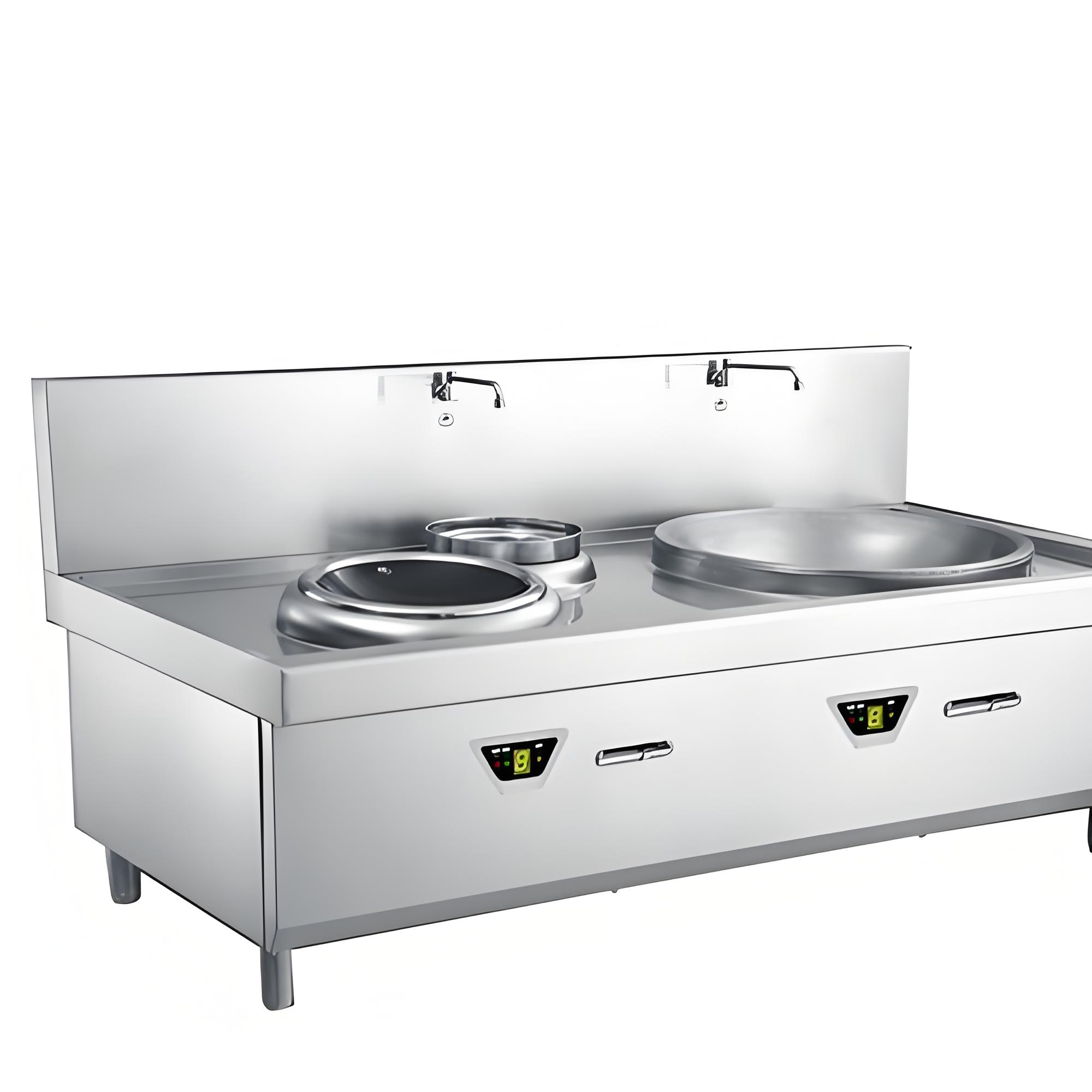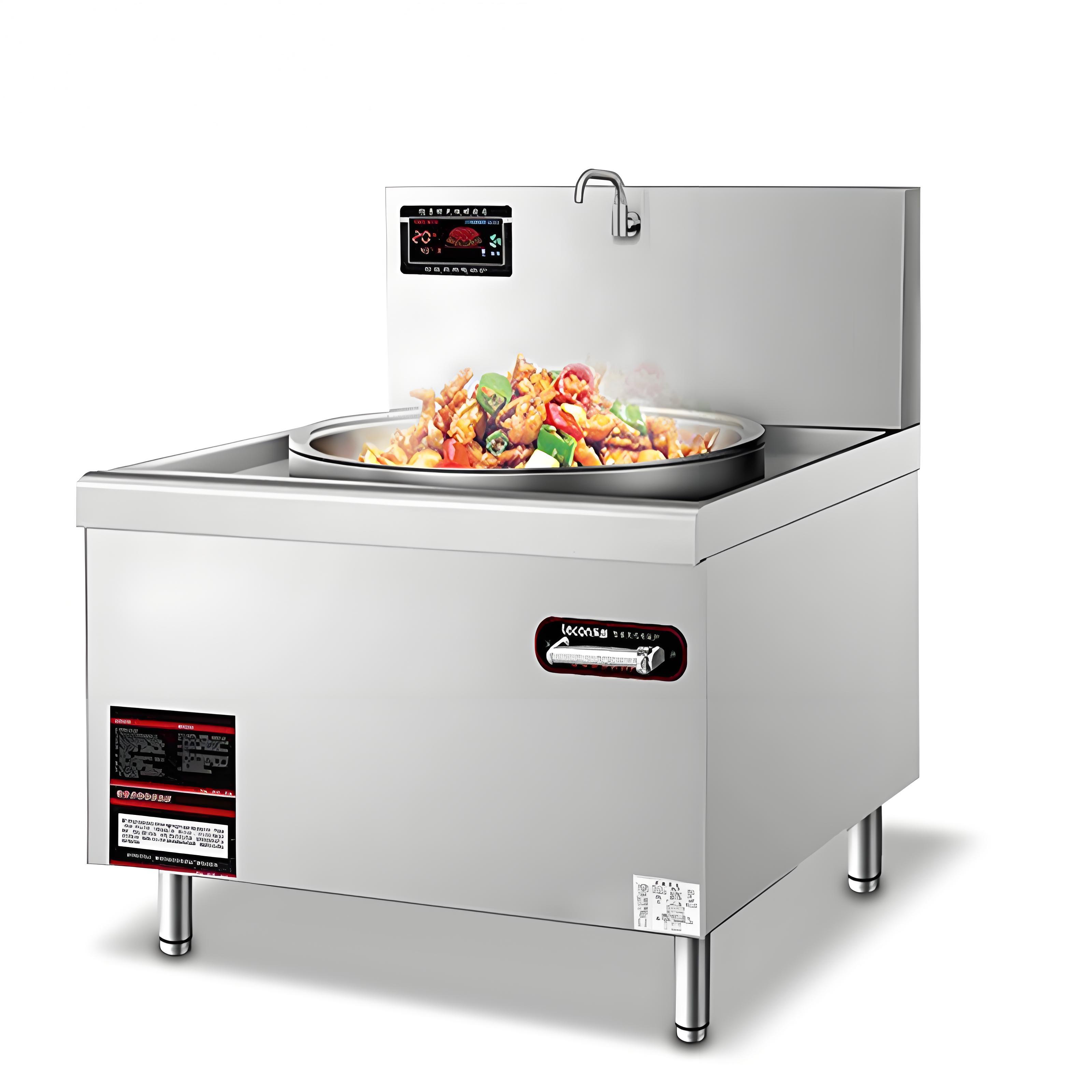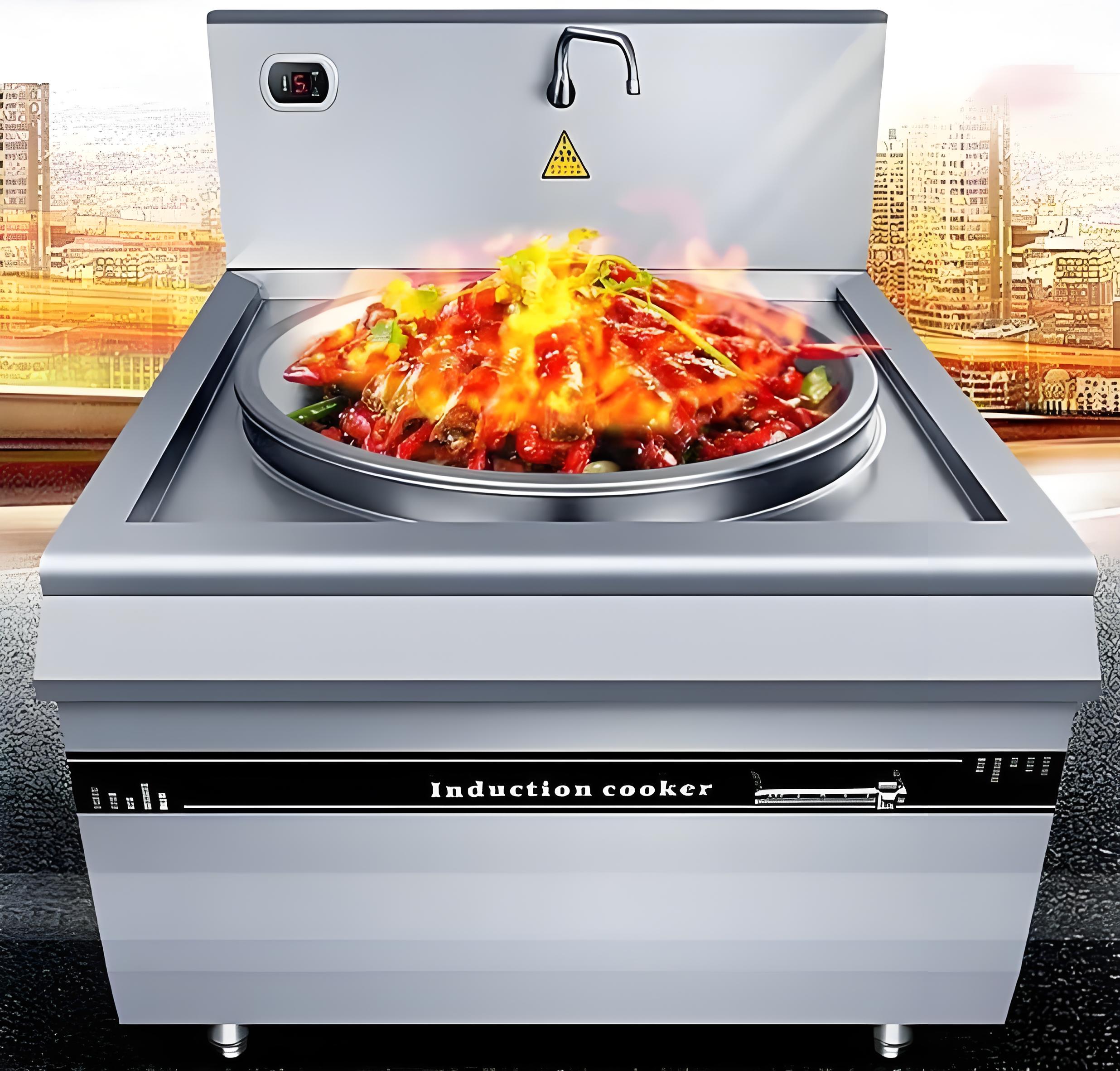In the culinary world, the debate between commercial induction cookers and gas stoves has been ongoing for quite some time. As someone who has been deeply involved in the commercial kitchen equipment industry for many years, I’ve witnessed firsthand the evolution of these two cooking appliances and the impact they have on professional kitchens. Today, I’d like to share my insights and experiences to help you understand whether commercial induction cookers can truly replace gas stoves.
The Evolution of Cooking Appliances
The Rise of Gas Stoves
Gas stoves have long been the staple in commercial kitchens. Their popularity stems from several key factors. Firstly, gas provides instant heat. When you turn on a gas burner, the flame appears almost immediately, allowing chefs to start cooking right away. This instant heat response is crucial in a fast-paced kitchen environment where time is of the essence.
Secondly, gas stoves offer precise temperature control. Chefs can easily adjust the flame size by simply turning the knob, giving them the ability to fine-tune the cooking process. Whether it’s a gentle simmer for a delicate sauce or a high – heat sear for a steak, gas stoves can handle it all.
Moreover, gas stoves have a certain visual appeal. The visible flame gives chefs a direct sense of the heat intensity, which can be reassuring, especially for those who have been trained on gas stoves for years.

The Emergence of Commercial Induction Cookers
On the other hand, commercial induction cookers are a relatively newer technology. They work by using electromagnetic fields to heat the cookware directly, rather than heating the air around it like gas stoves. This unique heating method has several advantages.
One of the most significant benefits is energy efficiency. Induction cookers transfer heat more directly to the pot or pan, resulting in less wasted energy. Studies have shown that induction cookers can be up to 90% energy – efficient, while gas stoves typically have an efficiency of around 40 – 60%. This means that in the long run, commercial induction cookers can lead to substantial cost savings on energy bills.
Another advantage is safety. Since there is no open flame, the risk of fire accidents is significantly reduced. In a busy commercial kitchen where there are many flammable materials and a high volume of foot traffic, this safety feature is invaluable. Additionally, induction cookers don’t emit harmful gases like carbon monoxide, which is a concern with gas stoves.
Performance Comparison
Heating Speed
Let’s start with heating speed. As mentioned earlier, gas stoves provide instant heat. However, commercial induction cookers are not far behind. In fact, many high – end induction cookers can reach high temperatures almost as quickly as gas stoves. For example, some induction models can bring a large pot of water to a boil in just a few minutes, which is comparable to gas stoves.
But it’s not just about reaching high temperatures. The ability to maintain a consistent temperature is also crucial. Gas stoves can sometimes have fluctuations in heat output, especially if the gas pressure is not stable. Induction cookers, on the other hand, offer very precise and stable temperature control. Once you set the desired temperature, the cooker will maintain it with minimal deviation, ensuring consistent cooking results.
Temperature Control
Temperature control is where induction cookers really shine. With digital controls, chefs can set the exact temperature they need, whether it’s 120°F for a slow – cooked dish or 450°F for a quick sear. This level of precision is difficult to achieve with gas stoves, as it’s more challenging to gauge the exact temperature based on the flame size alone.
In a professional kitchen, consistency is key. Whether it’s a chain restaurant that needs to ensure every dish tastes the same across different locations or a high – end fine – dining establishment that demands perfection in every plate, the precise temperature control of induction cookers can make a big difference.

Cookware Compatibility
Gas stoves are generally compatible with a wide range of cookware, including cast – iron, stainless – steel, and aluminum pots and pans. However, induction cookers have some specific requirements. For cookware to work on an induction cooker, it must be made of a ferromagnetic material, such as cast – iron or magnetic stainless steel.
This can be a limitation for some kitchens that already have a large collection of non – magnetic cookware. But on the positive side, many cookware manufacturers now offer induction – compatible versions of their products, and it’s becoming easier and more affordable to upgrade your cookware. Additionally, some induction cookers come with built – in sensors that can detect whether the cookware is compatible, which can save time and prevent frustration.
Cost Considerations
Initial Investment
The initial cost of a commercial induction cooker is often higher than that of a gas stove. This is because induction technology is more advanced and requires more sophisticated components. However, it’s important to look beyond the upfront cost and consider the long – term savings.
As mentioned earlier, induction cookers are more energy – efficient, which means lower energy bills over time. Additionally, induction cookers have fewer moving parts compared to gas stoves, which can result in lower maintenance and repair costs. In some cases, the energy savings alone can offset the higher initial investment within a few years.
Operational Costs
In addition to energy costs, there are other operational costs to consider. Gas stoves require a constant supply of gas, which can be subject to price fluctuations. Induction cookers, on the other hand, run on electricity, which may be more stable in terms of pricing in some regions.
Furthermore, gas stoves need regular maintenance, such as cleaning the burners and checking for gas leaks. Induction cookers are generally easier to clean, as the surface is smooth and doesn’t have crevices where food can get stuck. This can save time and labor costs in the long run.

Environmental Impact
Energy Consumption and Emissions
From an environmental perspective, commercial induction cookers have a clear advantage. As mentioned, they are more energy – efficient, which means less energy is consumed to produce the same amount of heat. This reduces the demand for fossil fuels and helps to lower greenhouse gas emissions.
Gas stoves, on the other hand, burn natural gas, which is a fossil fuel. The combustion of natural gas releases carbon dioxide, methane, and other pollutants into the atmosphere, contributing to climate change and air pollution. In urban areas with high concentrations of commercial kitchens, the cumulative emissions from gas stoves can have a significant impact on local air quality.
Sustainability
Induction cookers also align better with the growing trend of sustainability in the foodservice industry. Many consumers are now more conscious of the environmental impact of their dining choices and prefer to support restaurants that use eco – friendly practices. By switching to induction cookers, restaurants can demonstrate their commitment to sustainability and attract environmentally – conscious customers.
Real – World Examples
Success Stories
I’ve had the opportunity to work with several restaurants that have made the switch from gas stoves to commercial induction cookers. One of the most notable examples is a high – end Italian restaurant in the city center. The restaurant was looking to update its kitchen equipment to improve efficiency and reduce its environmental footprint.
After installing induction cookers, the restaurant noticed several positive changes. Firstly, the energy bills decreased significantly, which had a direct impact on the bottom line. Secondly, the chefs were impressed with the precise temperature control, which allowed them to achieve more consistent cooking results. The restaurant’s signature pasta dishes, which require precise cooking times and temperatures, came out perfectly every time.
Another example is a large – scale catering company. The company was struggling with the high maintenance costs of its gas stoves and the safety concerns associated with open flames. After switching to induction cookers, the company saw a reduction in maintenance costs and a decrease in the number of accidents in the kitchen. The induction cookers also allowed the company to cook more efficiently, which enabled them to take on larger catering jobs and increase their revenue.

Challenges and Solutions
Of course, the transition from gas stoves to induction cookers is not without its challenges. One of the main challenges is the initial cost, as mentioned earlier. To overcome this, some restaurants have opted for a phased approach, gradually replacing their gas stoves with induction cookers as their budget allows.
Another challenge is the need to train the staff on how to use the new equipment. Induction cookers operate differently from gas stoves, and chefs may need some time to get used to the digital controls and the different heating characteristics. However, most manufacturers offer training programs and resources to help with the transition. Additionally, once the staff becomes familiar with the induction cookers, they often find that they are easier and more efficient to use.
Conclusion
So, can commercial induction cookers replace gas stoves? The answer is a resounding yes, but it depends on your specific needs and circumstances. If you’re looking for energy efficiency, safety, precise temperature control, and a more sustainable cooking solution, then commercial induction cookers are an excellent choice.
However, if you’re on a tight budget and have a large collection of non – magnetic cookware, or if your chefs are highly trained and prefer the traditional feel of gas stoves, then a gradual transition or a hybrid approach may be more suitable.
In the end, the decision should be based on a thorough evaluation of your kitchen’s requirements, including your cooking style, budget, and long – term goals. As the technology continues to improve and the benefits of induction cooking become more widely recognized, I believe that we will see more and more commercial kitchens making the switch to induction cookers in the future.

Related Questions and Answers
Q1: Are induction cookers suitable for all types of cooking?
A1: Induction cookers are suitable for a wide range of cooking tasks, including boiling, frying, sautéing, and simmering. However, they may not be the best choice for certain specialized cooking techniques, such as char – grilling or smoking, which require direct contact with an open flame or high – heat charcoal. But for most commercial kitchen applications, induction cookers can handle the job just as well, if not better, than gas stoves.
Q2: How long do commercial induction cookers last?
A2: The lifespan of a commercial induction cooker can vary depending on the quality of the product, usage patterns, and maintenance. On average, a well – maintained commercial induction cooker can last anywhere from 8 to 15 years. This is comparable to the lifespan of a high – quality gas stove. Regular cleaning, proper use, and timely repairs can help to extend the life of your induction cooker.
Q3: Do induction cookers make the kitchen hotter?
A3: No, induction cookers do not make the kitchen as hot as gas stoves. Since they heat the cookware directly and not the surrounding air, there is less heat radiated into the kitchen environment. This can lead to a more comfortable working environment for the kitchen staff, especially during hot summer months. Additionally, it can also help to reduce the load on the kitchen’s ventilation system, which can further save on energy costs.
Q4: Can I use my existing pots and pans on an induction cooker?
A4: As mentioned earlier, for cookware to work on an induction cooker, it must be made of a ferromagnetic material. You can test your existing pots and pans by placing a magnet on the bottom. If the magnet sticks, then the cookware is induction – compatible. If not, you may need to invest in some new induction – friendly cookware. However, many cookware manufacturers now offer induction – compatible versions of their popular products, so you shouldn’t have too much trouble finding suitable replacements.
Q5: Are induction cookers more difficult to clean than gas stoves?
A5: Actually, induction cookers are generally easier to clean than gas stoves. The smooth, flat surface of an induction cooker can be wiped clean with a damp cloth and a mild detergent. There are no burners or grates to remove and clean, and food spills are less likely to get stuck in hard – to – reach places. Gas stoves, on the other hand, have burners and grates that need to be disassembled and cleaned regularly, which can be a time – consuming and messy task.




